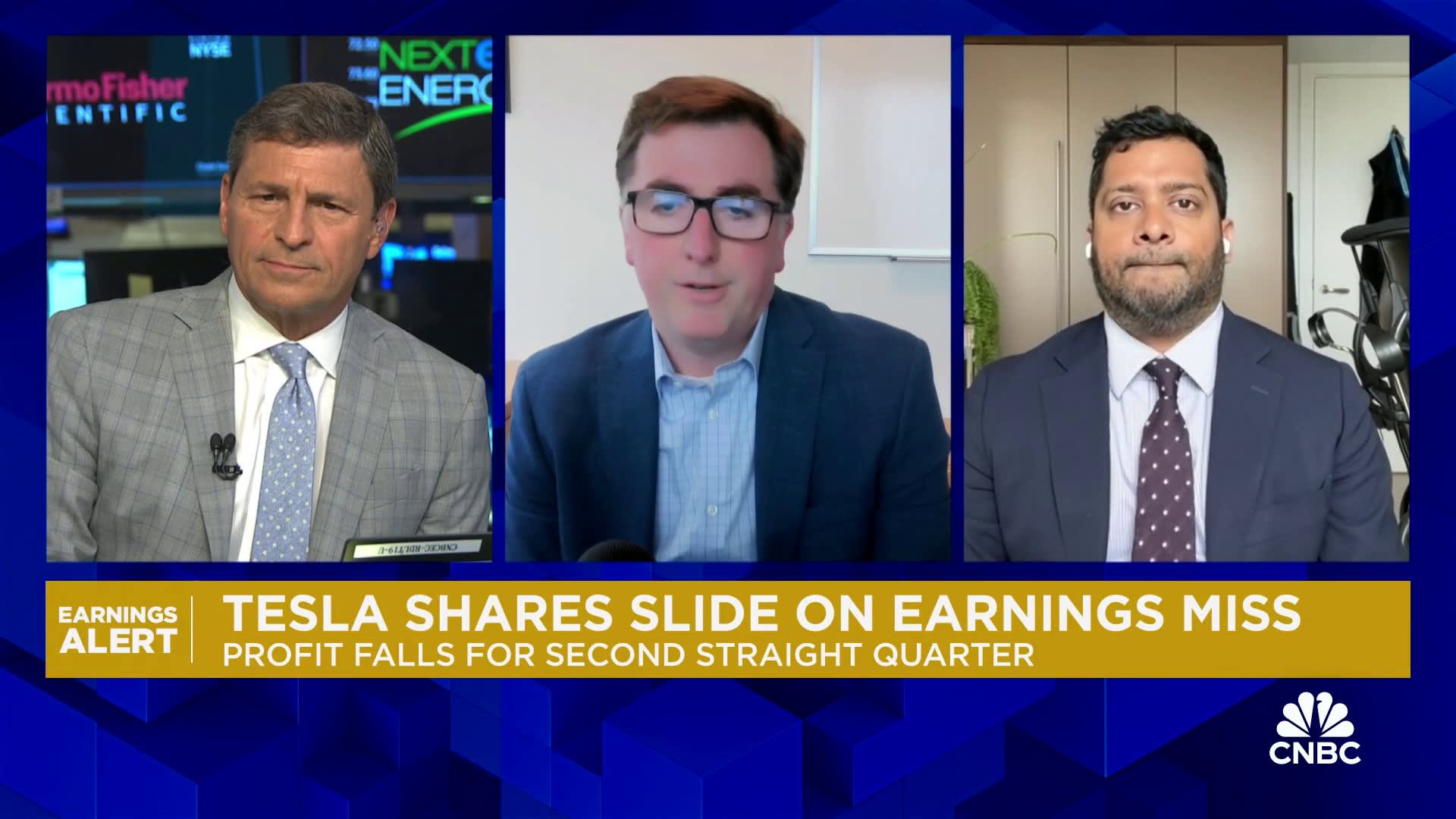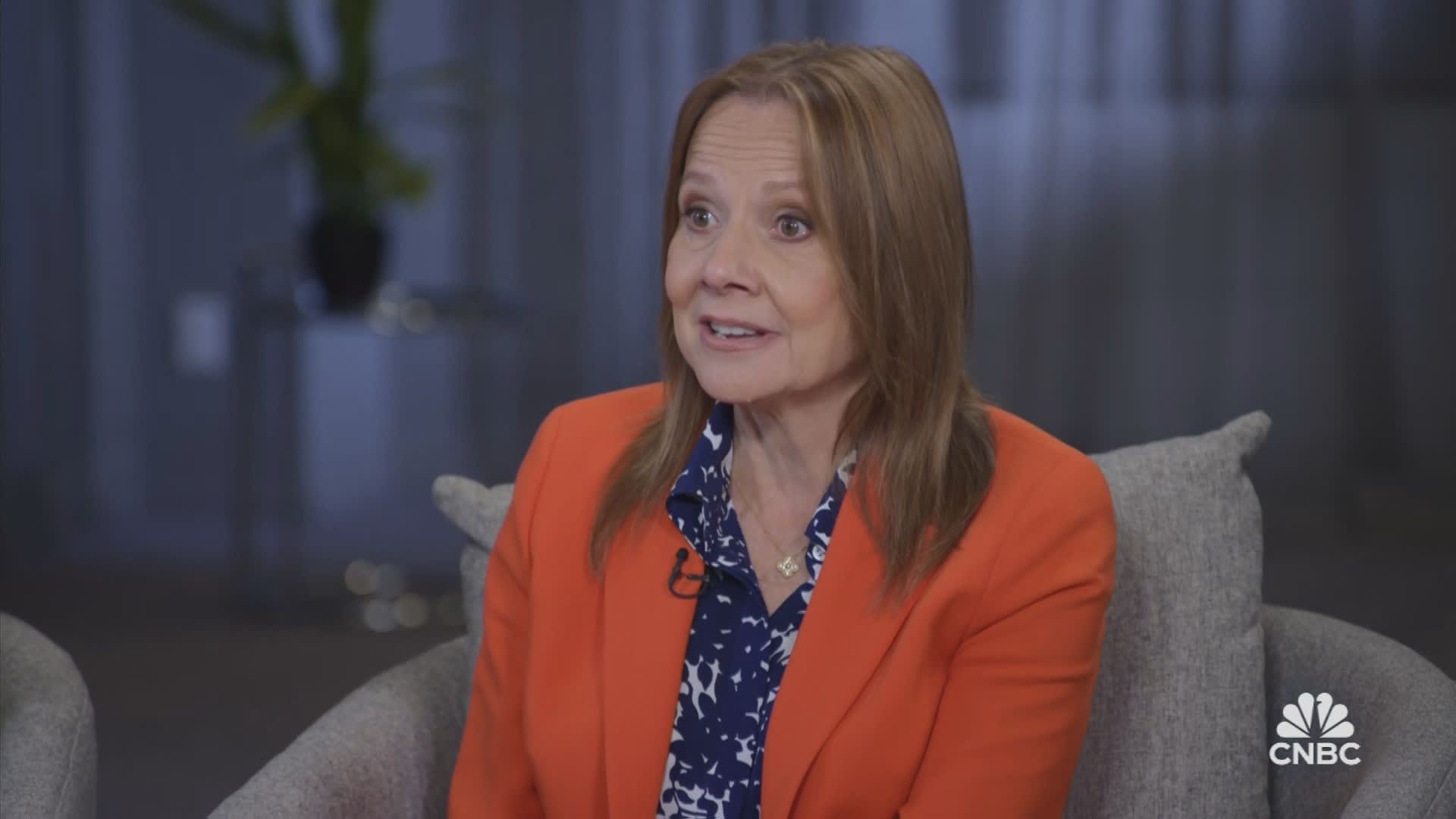Ford Mustang Mach E electric vehicles are offered for sale at a dealership on June 05, 2024 in Chicago, Illinois.
Scott Olson | Getty Images News | Getty Images
Car buyers who were among the first to make the EV switch are far from wholly converted.
Nearly 30% of electric vehicle owners globally are likely to switch back to internal combustion engine vehicles, according to a recent survey of consumers around the world conducted by McKinsey.
Many U.S. EV owners, in particular, are having second thoughts. According to the McKinsey survey, 46% of U.S. EV owners claimed they were likely to switch back to ICEs, well above the 29% global average of EV owners who stated they were likely or very likely to switch back to gas-powered cars, which included drivers from Australia, Brazil, China, Germany, Norway, France, Italy, and South Korea.
EV adoption has slowed in the U.S., even as the recent earnings and delivery reports from both GM and Ford showed sizable increases in EV sales. But those sales gains come off a very low base, and with both major automakers indicating that they are pulling back on growth and production forecasts for EVs in the near term. At GM, for example, EV deliveries increased 40% in Q2 compared to a year ago, but comprised only 3.2% of total U.S. sales. Ford said EV sales were up 60%, to nearly 24,000 units, but CEO Jim Farley described a “more realistic and sharpened” EV plan during its earnings call. Tesla remains the leader, but its EV sales have been falling and it has aggressively slashed prices.

In addition to the McKinsey data on current EV owners, a recent Gallup poll found fewer non-EV owners in the U.S. saying they might consider an EV purchase, down from 43% in 2023 to 35% in 2024. The percentage of American adults who do not intend to buy an EV went up from 41% to 48% year over year.
GM CEO Mary Barra recently said at a CNBC Councils: Leaders’ Library event that the EV experience is one that more drivers will be sold on once they “get in that electric vehicle and drive it.”
However the McKinsey data is reinforced by a study from auto market researcher Edmunds, which found that in Q2, 39.4% of EVs utilized as a trade-in were used to purchase or lease a new ICE vehicle.
“Once you turn someone off, it’s a lot harder to get them back,” said Ivan Drury, Edmunds director of insights. “Their experience is already mired in negativity. For someone for whom it’s going to be the charging component, or maybe the range wasn’t good enough, or battery degradation. Maybe [EV buyers] experienced it firsthand, and it was so bad, and they lived in a cold weather state where they said, ‘You know, I’m never gonna buy one again.'”
The EV sales pressure has not only resulted in automakers slashing prices and offering more incentives to move EVs — in many cases with lower interest rates and better terms on leases than for gas-powered cars — but also led to a steep decline in the value of used EVs, which before 2024 had been selling at a premium.
EV charging infrastructure remains a major hurdle
The lack of adequate public charging infrastructure remains a major issue. There are large disparities in distribution of EV chargers. In the U.S., 60% of urban residents live less than a mile from the nearest public charger, compared to 41% of suburban residents and 17% of rural residents. Even in high-growth EV markets, charging is behind. With one public port for every 29 EVs, California, which has the highest rate of EV purchases, ranks 49th among states in the ports-to-drivers ratio.
Of electric vehicle drivers likely to purchase an ICE as their next vehicle, 35% cite the lack of adequate public charging infrastructure as the basis for their decision, and 21% cite anxiety about charging access, according to McKinsey.
“Real-world concerns that consumers have voiced through the mainstream surveys are finally coming to fruition,” Drury said. “And that speaks to both current adoption rates that have stalled out, but also the idea that not everyone’s going to buy another.”
Drury said that some distinctions are becoming clear between all EV owners and those who are most satisfied. Among early EV adopters for whom the electric vehicle is their primary mode of transportation, there is more dissatisfaction with the vehicle and a higher likelihood of trading in an EV for ICE. Meanwhile, high-income drivers with garages and multiple car options are more likely to be satisfied with their purchase. Drury said luxury EV buyers are the most likely to purchase another EV.
“The affluent homeowner, who can have multiple cars and has their own home charging system, and most of the time they’re going less than 100 miles on their daily driving, it’s beautiful for that person to use an EV, because it’s never inconvenient for them,” said iSeeCars executive analyst Karl Brauer. “Especially for expensive EVs, they’re just looking for another flashy product.”
As battery range and density increase, and EV charging infrastructure improves, and prices continue down, Brauer said the picture should brighten for EV sales. “As all these things shift, it should theoretically make EVs more perfect or more functional and logical for a wider band of the consumer market. But we don’t know what the time frame is to solve all these problems,” he said.
In her recent appearance at the CNBC Councils: Leaders’ Library event, Barra spoke in terms of a decade or more for the EV story to play out.

EV costs are still too high for consumers and automakers
Ford CEO Farley said on its earnings calls that smaller and more affordable vehicles are the way to go with EV in volume. “Why? Because the math is completely different than ICE. In ICE, the business we have been in for 120 years, the bigger the vehicle, the higher the margin, but it is exactly the opposite for electric. The larger the vehicle, the bigger the battery, the more pressure on margins because customers will not pay a premium for those larger batteries.”
While EV prices have been under pressure this year, cost is the second-most common reason for going back to an ICE vehicle among EV buyers in the McKinsey survey, with 34% of EV drivers saying the “total costs of driving are too high.”
“The biggest barrier to entry for new EV buyers is price, because they tend to cost more than a non-EV,” Brauer said. “A person looks at them and they’re like, ‘This is what I have to pay for the equivalent EV versus a compact car that isn’t an EV?'”
Brauer said for some drivers, that cost is not just the sticker on the car. “I pay more for anxiety about how I’m going to be able to use the car if I can’t find a charger,” Brauer said. Some buyers also feel that EVs are less functional, resulting in “less confidence in my ability to go out and do what I want to do whenever I want to do it,” he said.
The one thing that no one is saying is that EVs are not the long-term future. Drury says the EV demand slowdown in the U.S. is not a halt and EV adoption is ultimately headed higher. “We know what the future is, regardless of our current concerns,” he said.
Some markets have done a better job to set up an infrastructure and policy framework to support continued EV adoption in the short-term, such as the oil-rich nation of Norway which has invested heavily in energy transition goals, with the plan to only sell zero-emissions passenger cars starting 2025. With high taxes for gas vehicles and steep incentives for EV drivers, including free tolls, zero registration tax, and zero value-added tax, Norway has been described as an “EV Utopia.”
Compared to the 46% of U.S.-based EV owners who say they may switch back to ICEs, only 18% of Norwegian owners want to switch. In 2023, Norway had the highest electric vehicle adoption rate in the world.
“The best solution is the hardest solution. It is solving the charging problem, and that’s both at home and on the road. We know for sure, if you could make that go away overnight, then you’re probably curing 80% to 90% of people’s issues. That speaks to both range anxiety, charge times, all those things that are the primary issues with EV ownership,” Drury said. If that could be solved, he said car buyers “have almost no excuse other than the fundamentals of ‘Hey, my favorite brand doesn’t sell one in this body type.’ Okay. Well, then, that’ll eventually get solved too.”
